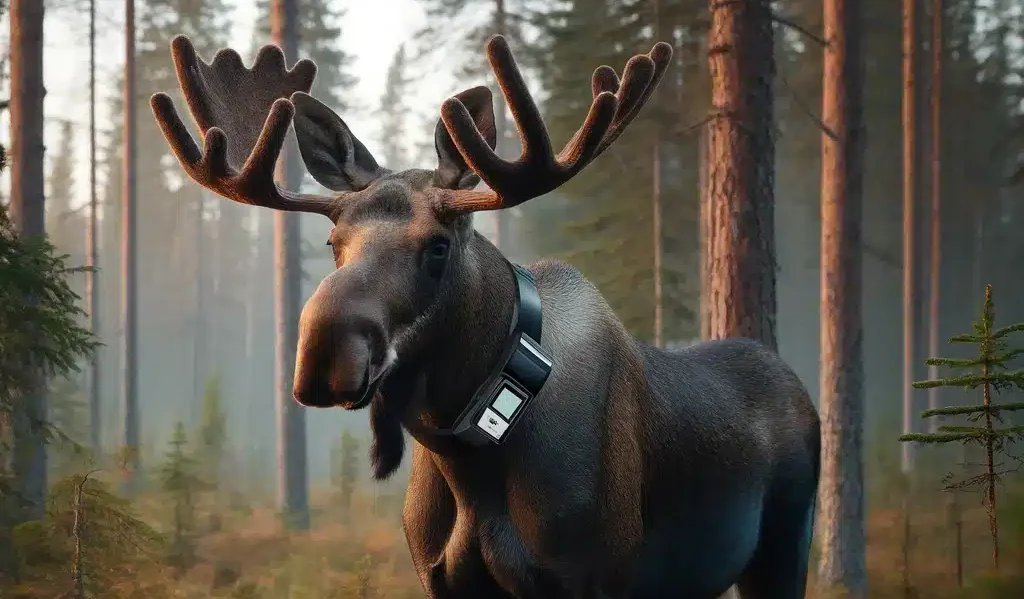Do you want to know more about GPS collars? We’ll discuss their functionality and remarkable versatility. These advanced devices have markedly changed the landscape of tracking and monitoring.
We use them for wildlife habitats, watch our pets, and with our livestock. Prepare to discover how these innovative collars are not just tools for location tracking but are instrumental in forging deeper connections with the natural world.
The Role of GPS Collars in Diverse Fields
- In wildlife research, GPS collars enable studying animal movements, social structures, and interaction with their ecosystems.
- For pet safety, these collars offer location tracking and insights into pet health, such as activity levels and behavior patterns.
- In livestock management, GPS collars assist in tracking animal locations, monitoring health, and optimizing feeding strategies.
Understanding GPS Technology
- GPS technology is essential for navigation and tracking and is widely used in various industries and personal applications.
- The system’s network of satellites covers the entire globe, ensuring accessibility in remote locations.
How GPS Works
- The process involves calculating distances from multiple satellites to pinpoint the exact location of a receiver on Earth.
- This technology is used in tracking devices, smartphones, aviation, and maritime navigation.
Accuracy and Precision in GPS Tracking
- Advanced algorithms and improved satellite technology have significantly enhanced GPS device accuracy over the years.
- Environmental factors, like atmospheric conditions, can occasionally affect GPS precision despite high accuracy.
Types of GPS Collars

Wildlife Tracking Collars
- These collars are essential for tracking endangered species, helping in their conservation and protection.
- They provide data for scientific studies, including understanding animal migration, breeding patterns, and responses to climate change.
Pet Tracking Collars
- Advanced models can include health monitoring and and alerts for abnormal behavior or possible health issues.
- These collars often have user-friendly interfaces, allowing pet owners to track and monitor their pets’ whereabouts easily.
Livestock Tracking Collars
- These collars help manage large herds, reducing the labor and time required for manual tracking.
- They provide valuable data for optimizing feeding regimes and improving overall herd health.
Applications of GPS Collars
- GPS collars help protect habitats by identifying critical areas for wildlife survival and reproduction.
- They are crucial in anti-poaching efforts, offering a way to monitor and protect endangered species.
Pet Safety and Management
- These devices are vital in urban environments where pets can easily get lost or stolen.
- GPS collars are increasingly used in training and behavior modification programs for pets.
Livestock Management
- In large-scale farming, these collars are key to managing livestock across vast areas, increasing efficiency and productivity.
- They aid in disease control by tracking animal movements and identifying potential outbreaks.
Advanced Features of GPS Collars

Geofencing Technology
- Geofencing is crucial for setting safe zones for pets in wildlife reserves and urban areas.
- This technology can trigger automatic feeders or open gates in livestock management systems.
Data Logging
- Data logging is used for long-term behavioral studies in wildlife, providing valuable ecological insights.
- In pet tracking, it helps in understanding lifestyle patterns and making necessary adjustments for pet wellness.
Remote Data Retrieval
- This feature is essential for researchers in harsh or inaccessible terrains, allowing data collection without disturbing animals.
- In livestock farming, it enables real-time decision-making based on immediate data access.
Challenges and Limitations

Battery Life Constraints
- Researchers are exploring renewable energy sources, like solar, to extend the life of GPS collars in the field.
- Battery life is a significant concern in pet collars, prompting the need for regular charging routines.
Signal Interference
- Advanced filtering techniques and auxiliary sensors are being developed to mitigate signal interference issues.
- Urban environments pose unique challenges for GPS accuracy, leading to innovations in signal processing.
Conclusion
Using GPS collars is a game-changer in wildlife conservation, pet safety, and livestock management. Despite challenges like battery life and signal interference, technological advancements continually enhance their effectiveness and reliability.







Thanks for sharing. I read many of your blog posts, cool, your blog is very good.
Can you be more specific about the content of your article? After reading it, I still have some doubts. Hope you can help me.